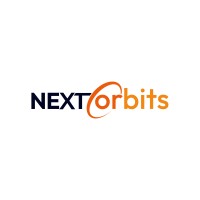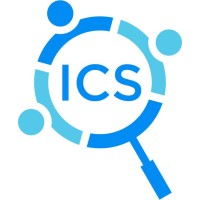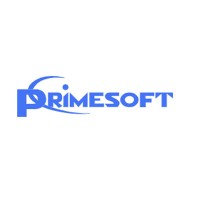

Next Orbits INC
Data Architect (Microsoft / Azure)
⭐ - Featured Role | Apply direct with Data Freelance Hub
This role is for a Data Architect (Microsoft/Azure) on a 6-month hybrid contract in Denver, CO, offering a competitive pay rate. Requires 8+ years in data engineering, strong Azure experience, and expertise in metadata management and data governance.
🌎 - Country
United States
💱 - Currency
$ USD
-
💰 - Day rate
Unknown
-
🗓️ - Date
November 5, 2025
🕒 - Duration
More than 6 months
-
🏝️ - Location
Hybrid
-
📄 - Contract
Fixed Term
-
🔒 - Security
Unknown
-
📍 - Location detailed
Denver, CO
-
🧠 - Skills detailed
#Data Lake #Data Governance #Schema Design #Databricks #Scala #Vault #SQL (Structured Query Language) #Strategy #Data Architecture #Data Management #"ETL (Extract #Transform #Load)" #Data Catalog #Python #Storage #Data Pipeline #Leadership #Documentation #Data Vault #Compliance #Data Dictionary #Metadata #Azure #Data Engineering #Data Strategy #Cloud #Data Processing
Role description
Title: Data Architect (Microsoft / Azure)
Duration – 6-month contract with potential for extension
Location – Hybrid, Denver, CO preferred
Travel – Up to 25% (domestic) for stakeholder workshops, reviews, and design sessions
Schedule – Standard business hours, Mountain Time (MST)
About the Company
We are a global technology infrastructure firm supporting some of the world’s largest cloud and enterprise organizations. Our mission is to deliver secure, high-performance, and scalable digital environments that power innovation and business growth. The Data Architecture function plays a central role in this mission—building the foundation for trusted analytics, governance, and insight-driven decision-making across the enterprise.
Position Overview
We are seeking an accomplished Data Architect with deep experience in Microsoft-based data ecosystems to lead the design of an enterprise data foundation and metadata strategy. This person will define how data is stored, cataloged, and governed—connecting business KPIs to reliable, traceable data sources.
This role demands a techno-functional leader who can balance hands-on technical design with strong business alignment. The ideal candidate has previously been a data engineer, understands the technical depth of pipelines and data lakes, and now operates at an architectural and strategic level. They can move fluidly between conversations with business stakeholders, enterprise architects, and engineering teams, ensuring all parties remain aligned around a single, well-defined data vision.
Key Responsibilities
● Lead the design of an Azure-based data architecture encompassing ingestion, storage, compute, and reporting layers. Establish consistent patterns for compute in the lake and the transformation of data from raw to curated zones.
● Drive the creation of the enterprise data dictionary, ensuring that business KPIs and metrics are clearly defined, traceable, and mapped to their underlying data sources. Facilitate lineage mapping across systems to provide clarity and trust in reporting.
● Develop and implement metadata management, catalog, and lineage capabilities using Microsoft Purview or Unity Catalog. Define ownership, data domains, and processes for maintaining these assets over time.
● Partner with business stakeholders to translate their KPI and reporting needs into scalable data models and repeatable design patterns. Guide discussions on where data should live, how it should be structured, and how it should be accessed and governed.
● Collaborate with engineering and delivery teams to ensure data pipelines and architecture patterns are implemented correctly, efficiently, and with long-term maintainability.
● Introduce standards and governance processes for naming conventions, schema design, access control, and versioning. Establish documentation templates, lineage diagrams, and data contracts to support clarity and consistency.
● Provide architectural oversight for data engineering activities, helping teams understand the "why" behind design choices and aligning technical implementations with the overall enterprise data strategy.
● Act as a trusted advisor to leadership and enterprise architecture groups, helping shape the organization’s approach to data modernization, cataloging, and governance.
● Identify opportunities to improve performance, reduce redundancy, and simplify data flows through effective architectural design.
● Take ownership of outcomes; work independently with minimal supervision, proactively identify blockers, and drive alignment across global and cross-functional teams.
Qualifications
● 8+ years of progressive experience in data engineering and architecture, with at least 3 years focused on Azure or Microsoft-based ecosystems.
● Demonstrated success designing or leading implementations of data lakes, lakehouses, or Fabric/Databricks environments.
● Strong understanding of metadata management, lineage, and data cataloging using tools such as Microsoft Purview or Unity Catalog.
● Prior hands-on experience with SQL, Python, ETL/ELT design, and performance tuning.
● Proven ability to translate complex business KPIs and metrics into data models, pipelines, and documentation that enable consistent, governed analytics.
● Strong understanding of cloud data governance, access management, and compliance frameworks.
● Excellent communication and facilitation skills; able to lead workshops, communicate effectively with both executives and delivery teams, and ensure alignment without technical overreach.
● Self-driven, detail-oriented professional who operates autonomously, anticipates stakeholder needs, and delivers solutions without heavy supervision.
● Preferred: experience with Azure Fabric, Databricks Delta, Data Vault 2.0, or Lakehouse architectures.
What Success Looks Like
● A functional, business-adopted data dictionary and catalog that serve as the single source of truth for all data definitions and lineage.
● Clear mapping of KPIs to data sources, providing visibility into data ownership and transformation paths.
● Consistent and scalable architecture patterns for compute and data processing in Azure.
● Strong partnership between data engineering, architecture, and business stakeholders built on clarity, trust, and communication.
● Autonomous leadership—minimal handholding required to push forward initiatives, manage deliverables, and keep stakeholders aligned.
● Visible impact through improved governance, faster decision-making, and reliable business reporting.
Title: Data Architect (Microsoft / Azure)
Duration – 6-month contract with potential for extension
Location – Hybrid, Denver, CO preferred
Travel – Up to 25% (domestic) for stakeholder workshops, reviews, and design sessions
Schedule – Standard business hours, Mountain Time (MST)
About the Company
We are a global technology infrastructure firm supporting some of the world’s largest cloud and enterprise organizations. Our mission is to deliver secure, high-performance, and scalable digital environments that power innovation and business growth. The Data Architecture function plays a central role in this mission—building the foundation for trusted analytics, governance, and insight-driven decision-making across the enterprise.
Position Overview
We are seeking an accomplished Data Architect with deep experience in Microsoft-based data ecosystems to lead the design of an enterprise data foundation and metadata strategy. This person will define how data is stored, cataloged, and governed—connecting business KPIs to reliable, traceable data sources.
This role demands a techno-functional leader who can balance hands-on technical design with strong business alignment. The ideal candidate has previously been a data engineer, understands the technical depth of pipelines and data lakes, and now operates at an architectural and strategic level. They can move fluidly between conversations with business stakeholders, enterprise architects, and engineering teams, ensuring all parties remain aligned around a single, well-defined data vision.
Key Responsibilities
● Lead the design of an Azure-based data architecture encompassing ingestion, storage, compute, and reporting layers. Establish consistent patterns for compute in the lake and the transformation of data from raw to curated zones.
● Drive the creation of the enterprise data dictionary, ensuring that business KPIs and metrics are clearly defined, traceable, and mapped to their underlying data sources. Facilitate lineage mapping across systems to provide clarity and trust in reporting.
● Develop and implement metadata management, catalog, and lineage capabilities using Microsoft Purview or Unity Catalog. Define ownership, data domains, and processes for maintaining these assets over time.
● Partner with business stakeholders to translate their KPI and reporting needs into scalable data models and repeatable design patterns. Guide discussions on where data should live, how it should be structured, and how it should be accessed and governed.
● Collaborate with engineering and delivery teams to ensure data pipelines and architecture patterns are implemented correctly, efficiently, and with long-term maintainability.
● Introduce standards and governance processes for naming conventions, schema design, access control, and versioning. Establish documentation templates, lineage diagrams, and data contracts to support clarity and consistency.
● Provide architectural oversight for data engineering activities, helping teams understand the "why" behind design choices and aligning technical implementations with the overall enterprise data strategy.
● Act as a trusted advisor to leadership and enterprise architecture groups, helping shape the organization’s approach to data modernization, cataloging, and governance.
● Identify opportunities to improve performance, reduce redundancy, and simplify data flows through effective architectural design.
● Take ownership of outcomes; work independently with minimal supervision, proactively identify blockers, and drive alignment across global and cross-functional teams.
Qualifications
● 8+ years of progressive experience in data engineering and architecture, with at least 3 years focused on Azure or Microsoft-based ecosystems.
● Demonstrated success designing or leading implementations of data lakes, lakehouses, or Fabric/Databricks environments.
● Strong understanding of metadata management, lineage, and data cataloging using tools such as Microsoft Purview or Unity Catalog.
● Prior hands-on experience with SQL, Python, ETL/ELT design, and performance tuning.
● Proven ability to translate complex business KPIs and metrics into data models, pipelines, and documentation that enable consistent, governed analytics.
● Strong understanding of cloud data governance, access management, and compliance frameworks.
● Excellent communication and facilitation skills; able to lead workshops, communicate effectively with both executives and delivery teams, and ensure alignment without technical overreach.
● Self-driven, detail-oriented professional who operates autonomously, anticipates stakeholder needs, and delivers solutions without heavy supervision.
● Preferred: experience with Azure Fabric, Databricks Delta, Data Vault 2.0, or Lakehouse architectures.
What Success Looks Like
● A functional, business-adopted data dictionary and catalog that serve as the single source of truth for all data definitions and lineage.
● Clear mapping of KPIs to data sources, providing visibility into data ownership and transformation paths.
● Consistent and scalable architecture patterns for compute and data processing in Azure.
● Strong partnership between data engineering, architecture, and business stakeholders built on clarity, trust, and communication.
● Autonomous leadership—minimal handholding required to push forward initiatives, manage deliverables, and keep stakeholders aligned.
● Visible impact through improved governance, faster decision-making, and reliable business reporting.






